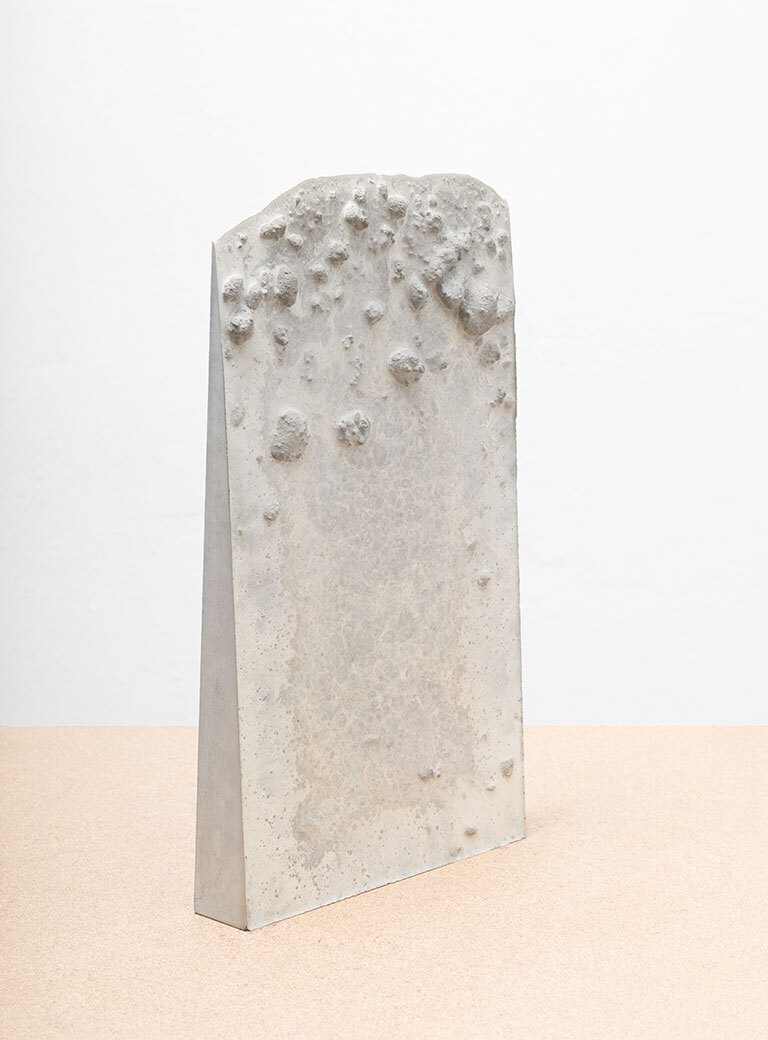
Cast concrete
36 x 21 x 4 cm (14.2 x 8.3 x 1.6 inches)
Height may vary slightly
Series of 14 unique pieces
1.350 Euro
Includes 13% VAT. Please contact us for shipping options, and for pricing in other currencies.

Cast concrete
36 x 21 x 4 cm (14.2 x 8.3 x 1.6 inches)
Height may vary slightly
Series of 14 unique pieces
1.350 Euro
Includes 13% VAT. Please contact us for shipping options, and for pricing in other currencies.
For Close Disclose Christoph Weber created a series of sculptures cast in concrete. For its production, Weber used a rectangular casting form with a slanted bottom to impact the way by which the concrete flows and settles in the form before it hardens.
The result is a sculpture in the shape of a slab striving upwards. Each cast features a distinct surface on its sides: a glossy and a coarse surface. They represent the two aesthetical extremes that can emerge from a casting process which is also reflected in the work’s title – “closed” and “disclosed”. Intuitively, one would expect the “closed” side to denominate the smooth and shiny, reflective side, whereas the “disclosed” side would be the one that reveals the ingredients of the mix and enclosures produced during the casting process.
Conversely however, these words are equally descriptive of the opposite side: “Exposed” could also be interpreted as the side that offers a direct view into the material through the transparent layer on its surface, whereas “closed” might also refer to the rougher side of the form, that envelops different bits and pieces, the so-called aggregate, that has not sunk to the bottom during the casting process.














Austrian artist Christoph Weber (*1974 in Vienna) manipulates concrete in an effort that seems to defy the material’s conventional use. As a material that per se is of little value, concrete has found its way into the architectural and symbolic history of modernism like no other. Both as a building material and a metaphor, it conveys associations of rigidity, unyieldingness, imposition, and, in the broadest sense, brutality and violence.
Despite its superficial hardness and forbidding character, concrete reveals a rich life and processual quality of its own that Weber is interested in. At the very moment when the concrete changes state from viscous to solid, the artist lifts, overturns or folds and forces the material into a shape for which the it was not intended.
“Concrete is usually bigger than a human being, but I work on a scale that I can manage it.”, says Weber. “I’m trying to dominate something that usually dominates us.” His sculptural works move between associations of construction and destruction, violence and tenderness, depression and hope and possess a distinct “laconic sadness” as he says himself. Both coarse and soft, solid and fragile, rigid and immovable they appear as if they were representing a congealment of time itself.
Photos: Courtesy the artist
Links: